NBC, MSNBC create virtual iteration of D.C. reachable through ‘portals’
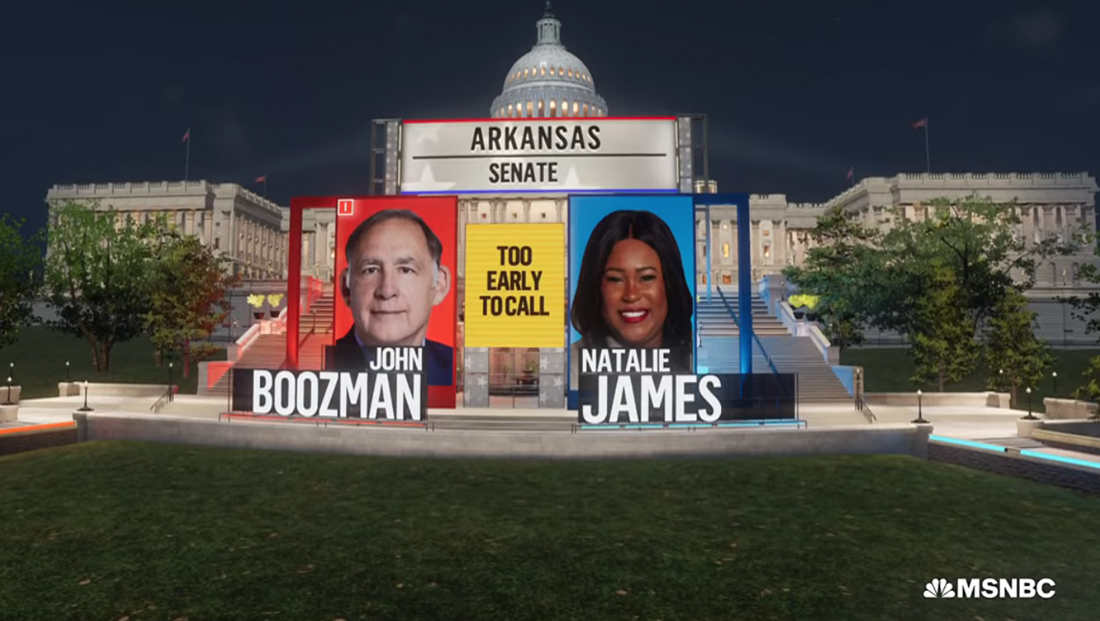
Subscribe to NCS for the latest news, project case studies and product announcements in broadcast technology, creative design and engineering delivered to your inbox.
NBC and MSNBC both shared a combination of augmented reality, virtual reality and virtual set extensions that used a dramatically-lit nighttime model of the Capitol and its grounds to showcase election results.
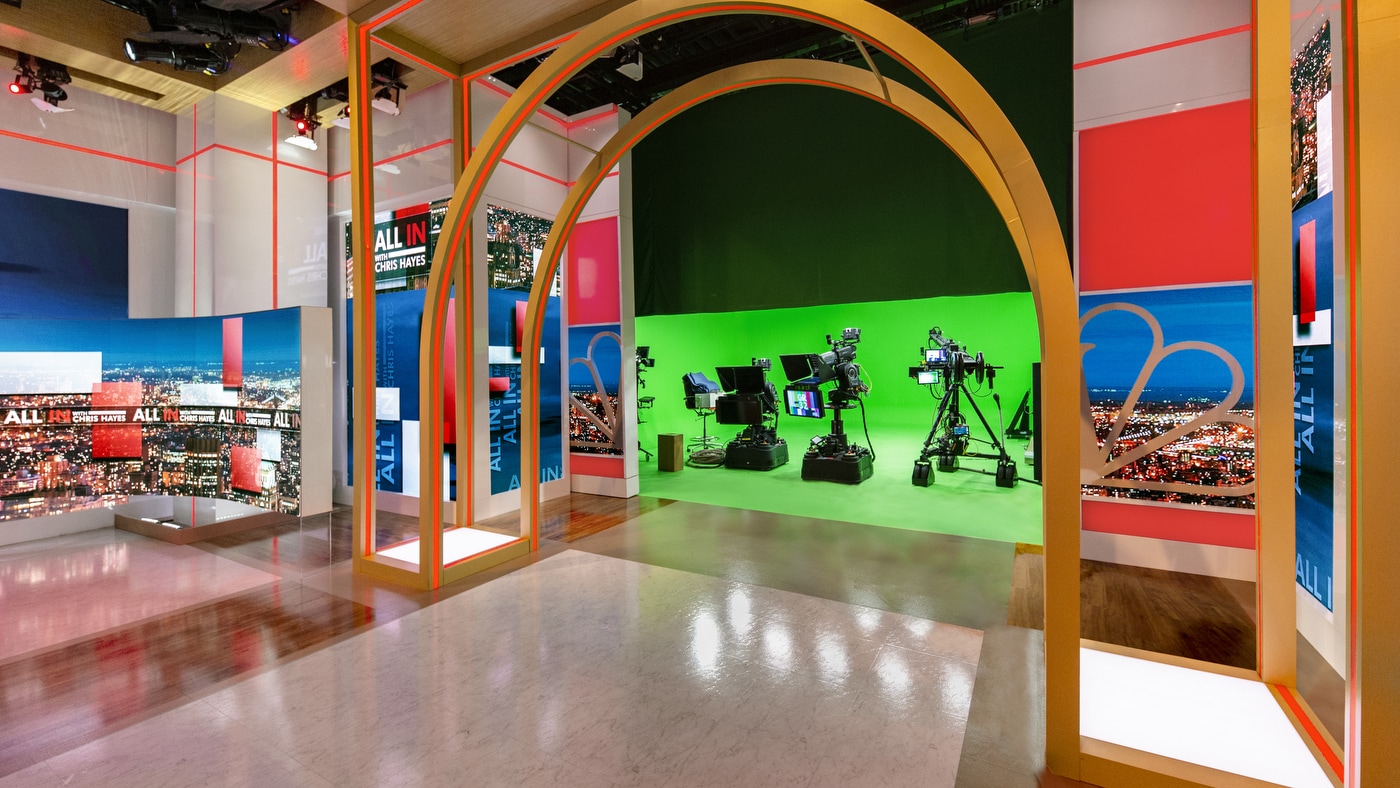
A view of the green screen studio space behind the sliding walls, which are the segments with half of the NBC peacock logo on each.
MSNBC leveraged the green screen studio space that’s tucked behind two rolling walls adjacent to its primary studio, 3A.
Like in 2021, the space was used to transport viewers into a virtual space — but also took things a bit farther this time around.
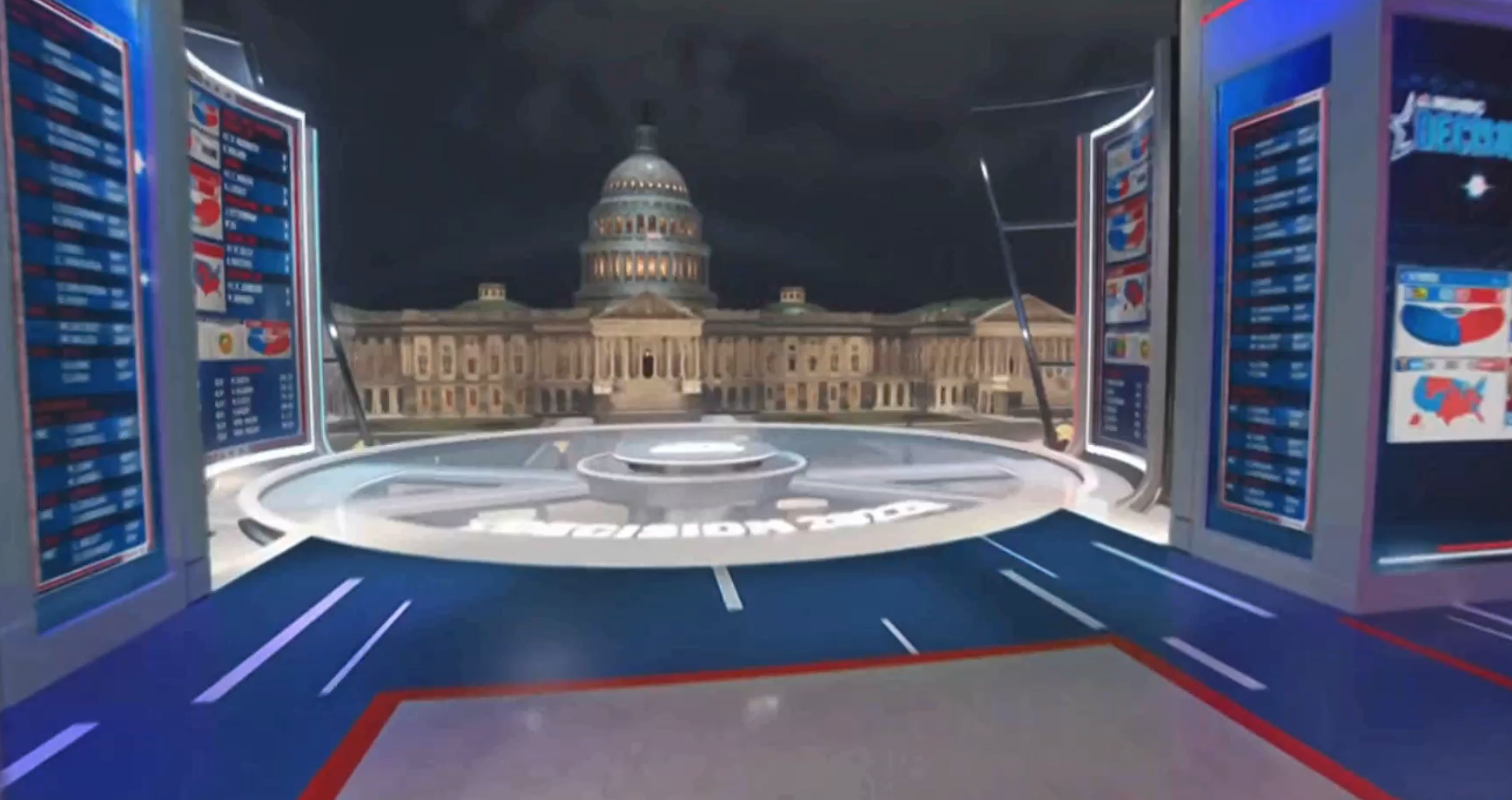
There was a small virtual structural area closest to the open doors, which was designed by Clickspring Design, the same firm who designed the studio itself.
This included a circular balcony with glass floor and NBC peacock in the middle along with two metal, angled metal frames supporting large simulated LED boards with election data.
The balcony would remain visible even when the environment beyond wasn’t used, appearing often behind Steve Kornacki’s touchscreen space.
When the abilities were fully leveraged, however, the view would fly quickly over the railing-less balcony to a 3D model of the Capitol grounds, which was developed by NBC’s in-house team.
Instead of a relatively small, atrium-like space used in 2021, viewers were shown virtual views of Washington that were largely simplified to only prominently show key structures — including the Capitol, Lincoln Memorial and Capitol Reflecting Pool as well as the park-like settings that surround the area (the Capitol Reflecting Pool is distinct from the larger one farther west).
The viewport traveled between these locations by quickly flying over grass, buildings and roads.
There were several key layouts used, most of them focused around the Capitol, which is appropriate given that the crux of the national races concerned the lawmakers who work there.
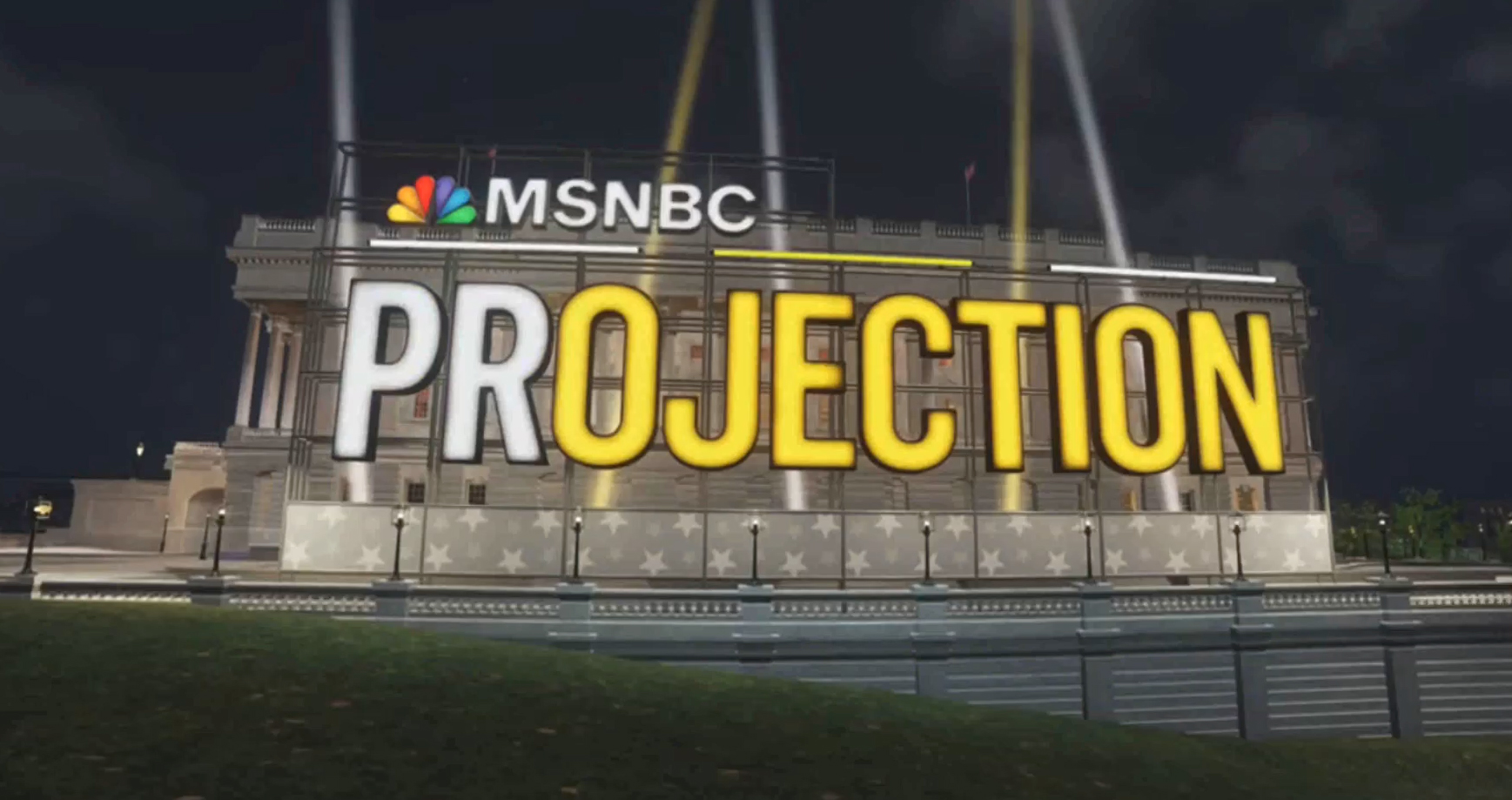
The first option was on side of the building depicted with a virtual scaffolding-like structure on the back seemingly supporting light-up version of the network logo and the word “Projection.”
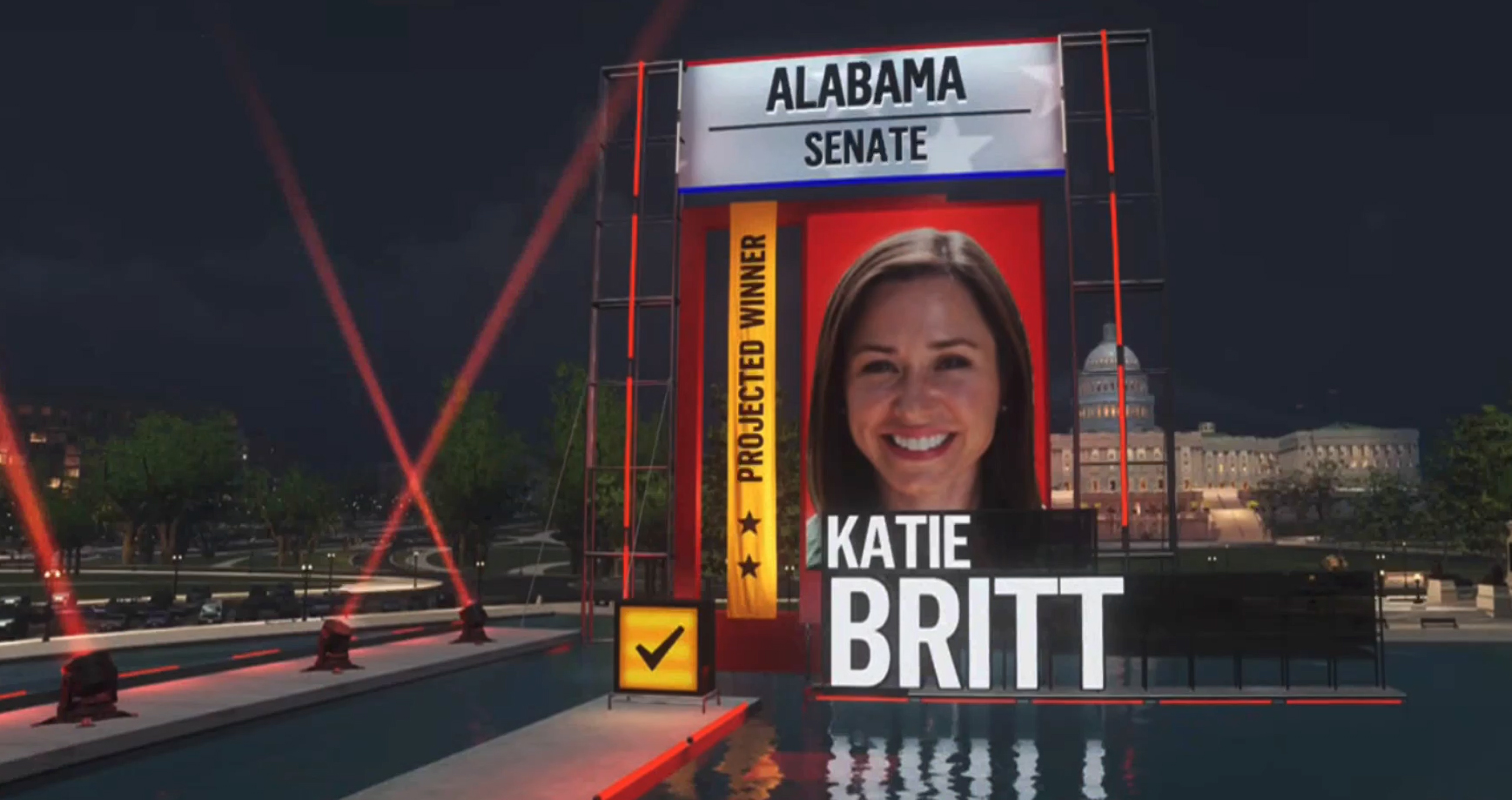
Another common scene was more toward the reflecting pool and was favored when only one candidate needs to be shown, typically to showcase a projected winner.
These were displayed within another scaffold-like structure with accent lighting and large sign-like elements to show the state, type of race, status (such as projected winner) and the person’s portrait. Below this a smaller support structure served as the background for the first and last name, the latter of which was shown larger than the first name.

In cases for projected winners, an additional box, sat on a peninsula of sidewalk. The scene could be illuminated with red accent lighting for Republicans and blue for Democrats, an effect that was also applied to searchlights shown to the left as well as the sold support frame around the portrait.
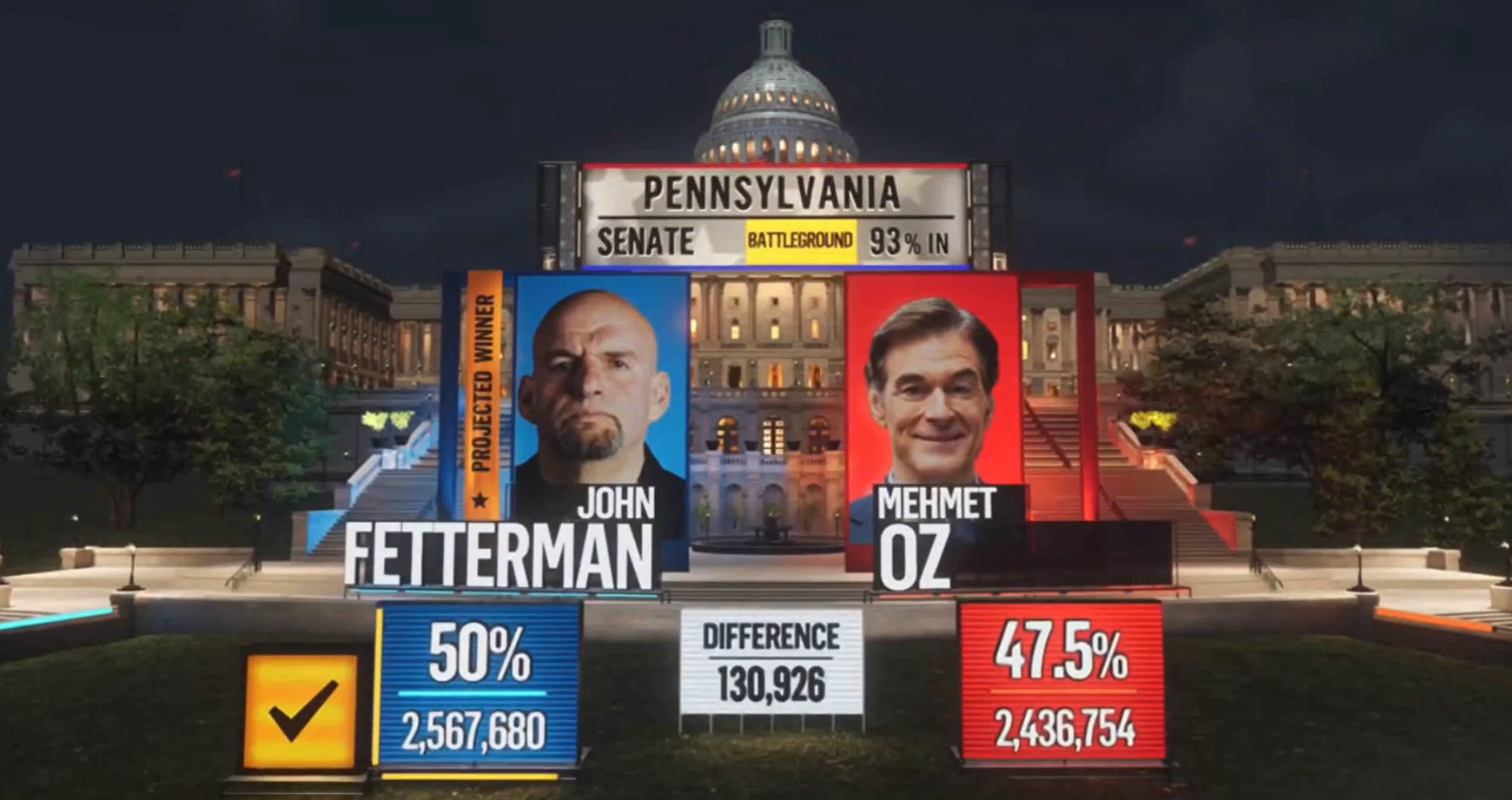
When two candidates needed to be shown — whether to illustrate the match-up or show a winner or current state of the race, the screen would shift to a view closer to the Capitol, with two frames set up under a larger, banner held up by simulated scaffolding.
Depending on the application, additional, smaller freestanding panels could be inserted in the grass in front showing current vote totals, a yellow checkmark for projected winners or other data such as the difference in votes.

Another location was a grassy area farther west of the the Capitol Reflecting Pool where balance-of-power graphics could be shown for both the Senate and House.
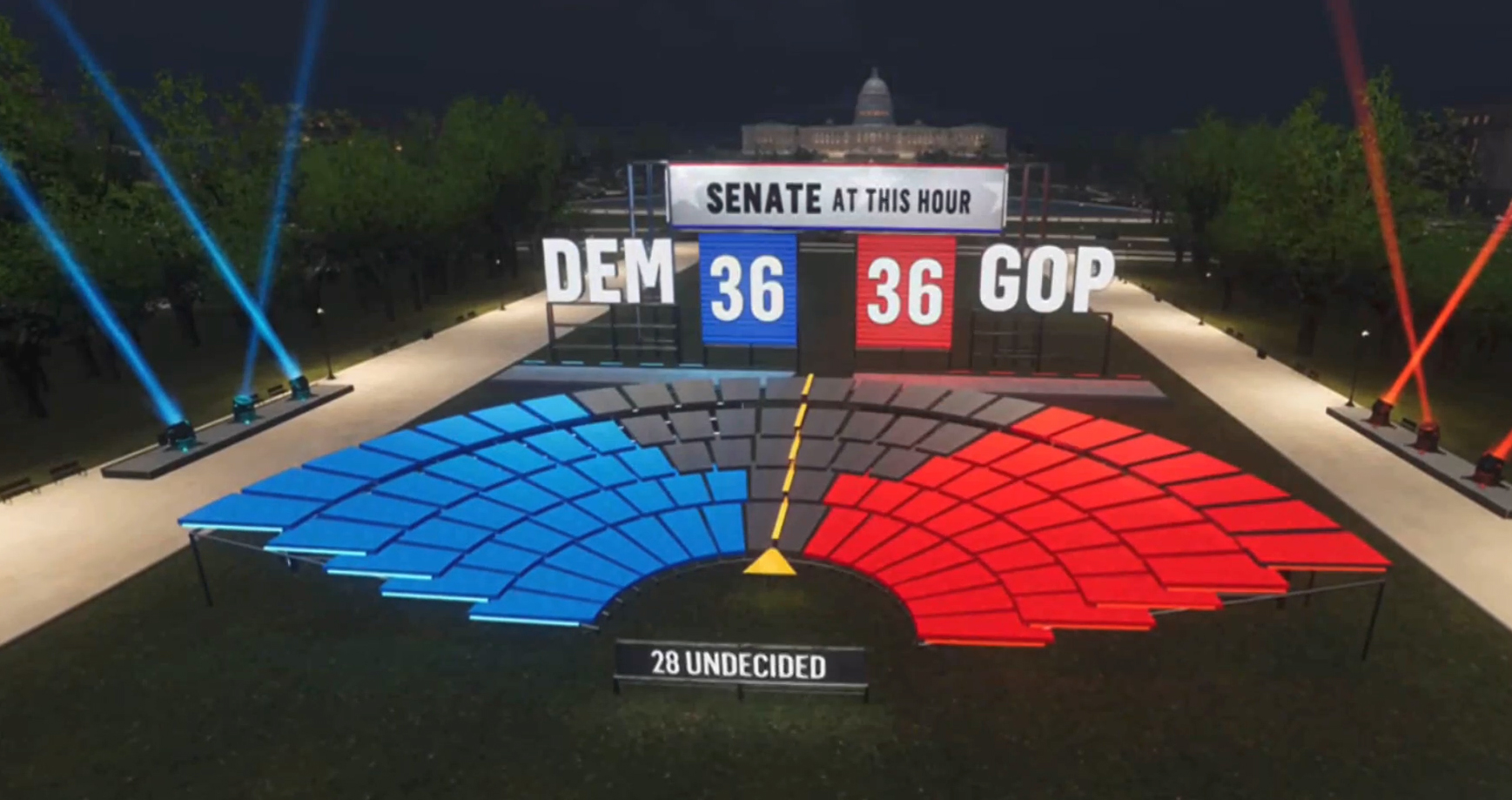
The Senate layout used what looked a bit like a curved set of risers or bleachers set up in the lawn, with each seat represented by a flat wedge. Metallic structures behind this supported the labels “Dem” and “GOP” along with current tallies and the graphics’s label. Nearer to the viewport, a smaller black sign showed the number of undecided seats.
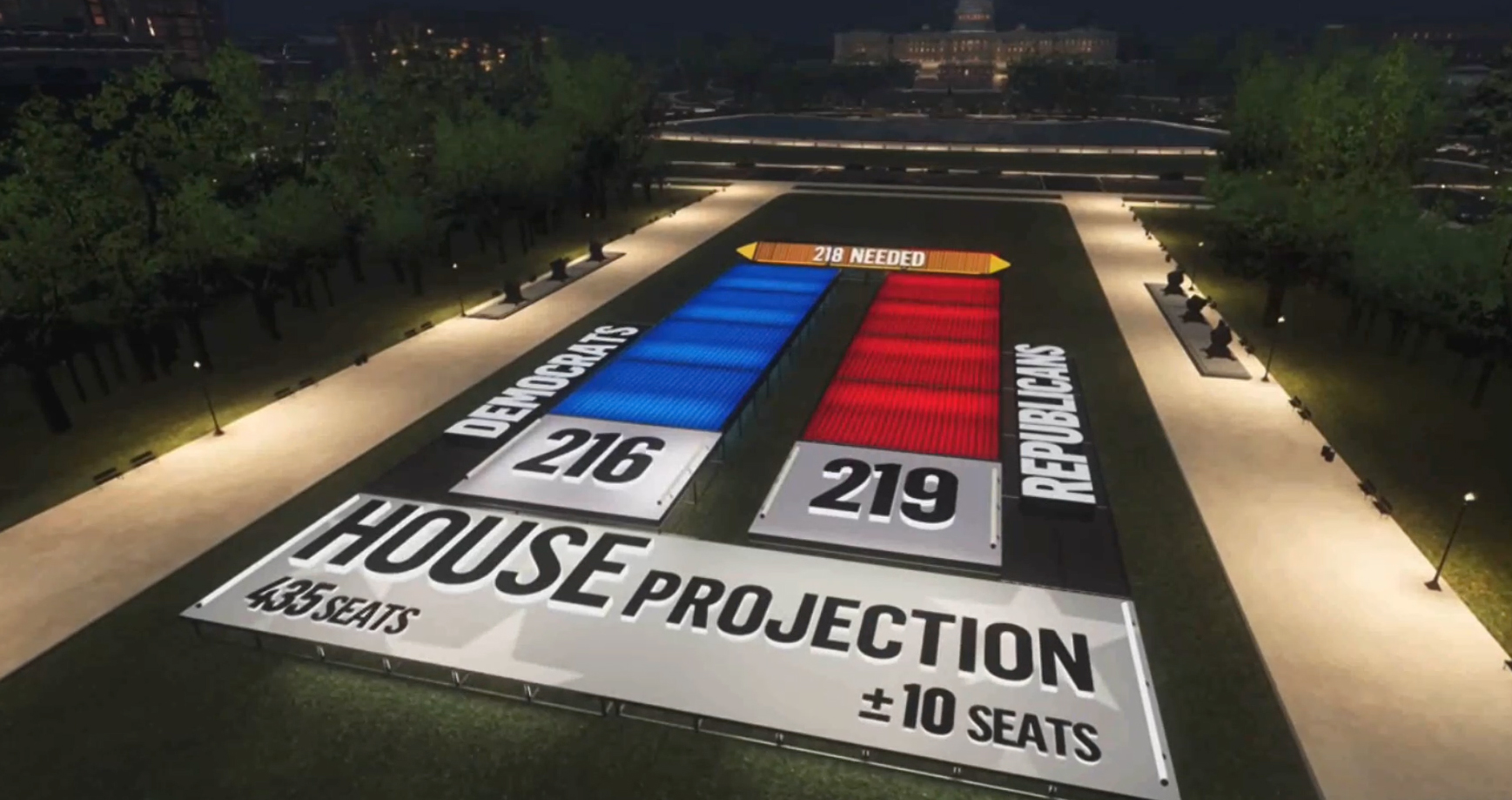
The same park space could also show U.S. House projections, with platform-like structures with metallic tops serving as the canvas for lettering explaining the graphic. Two catwalk-like elements sat farther back, with the virtual surfaces lighting up red or blue, depending on the side, along with the current tallies on a solid part close to the foreground.
For much of the night, the numbers were so close that the attempt at the bar chart illustration was fairly ineffective, since both runways were essentially filled in a similar amount.
All of these views included built-in floating camera walk and wander-style movements that caused the various layers of 3D panels shift perspective subtly.
The NBC broadcast network also had access to the same set of graphics.
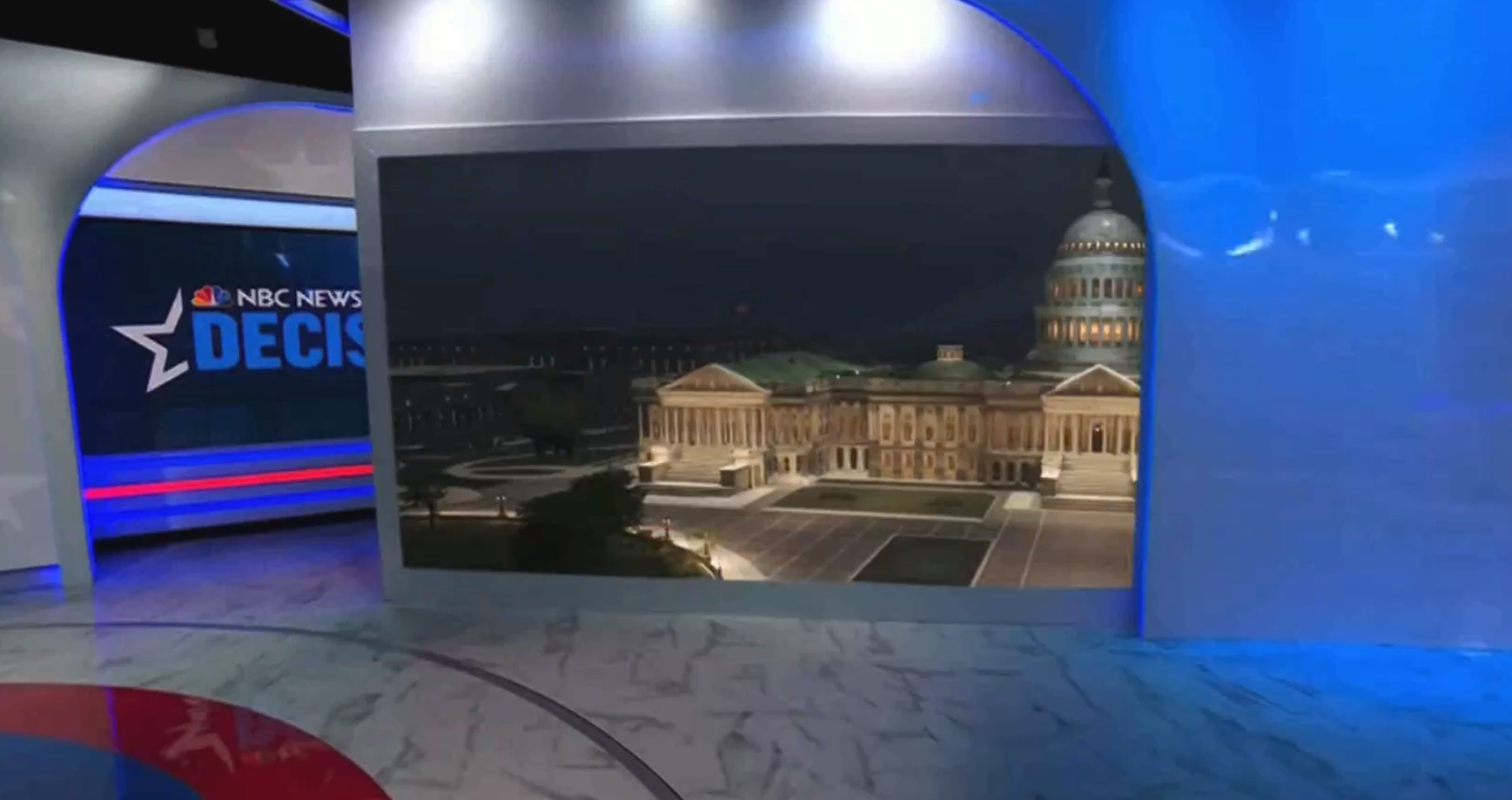
A handheld camera view that had just been showing the primary anchor desk but quickly moved over to the southeast video wall, which served as a portal to the virtual rendition of Capitol Hill.
During its coverage, the flat video wall in the southeast corner of Studio 1A could become a window into the virtual scene that was used in combination with a parallax effect.

For non-Congressional races, a view of the exterior of 30 Rockefeller Plaza with floating panels in front of the skyscraper could be used. This was previously how NBC and MSNBC would display most results using AR.
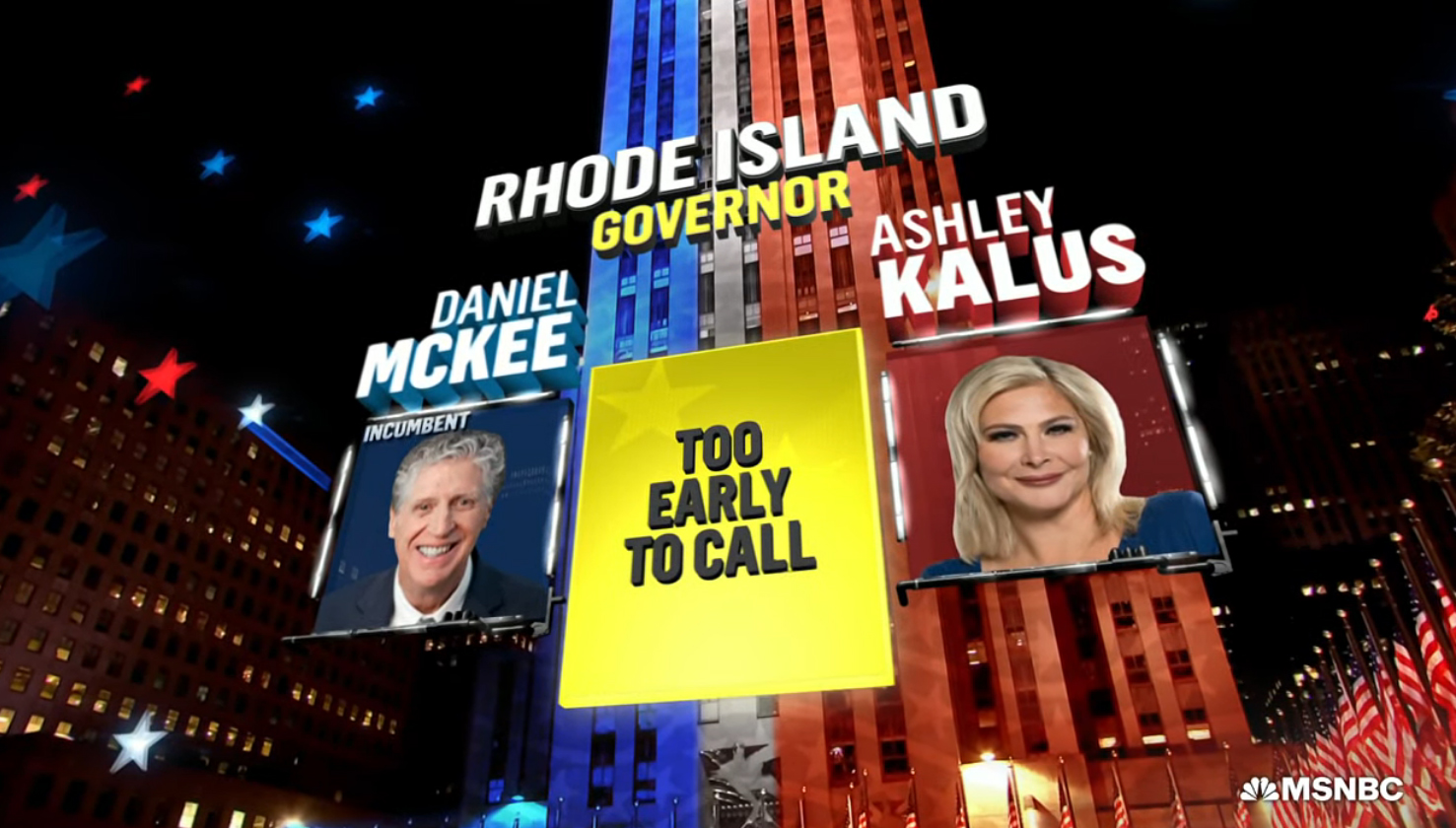
Both networks also had the ability to cut directly to exterior AR or virtual environment without the transitional element if needed. In addition, more traditional fullscreen graphics showing results were also available and appeared to be used more later into the overnight hours.
AR star and other accents were added to these scenes as well, as they have in the past.
Fox’s cable channel used the U.S. Capitol as a backdrop for its virtual reality graphics on election night as well, but its take was a bit different — using warm yellows to accent the Capitol and actually taking viewers inside the House and Senate chambers.
Subscribe to NCS for the latest news, project case studies and product announcements in broadcast technology, creative design and engineering delivered to your inbox.






tags
2022 Election, Clickspring Design, MSNBC, NBC, NBC News
categories
Augmented Reality, Virtual Production and Virtual Sets, Broadcast Design, Broadcast Industry News, Elections, Heroes, Networks